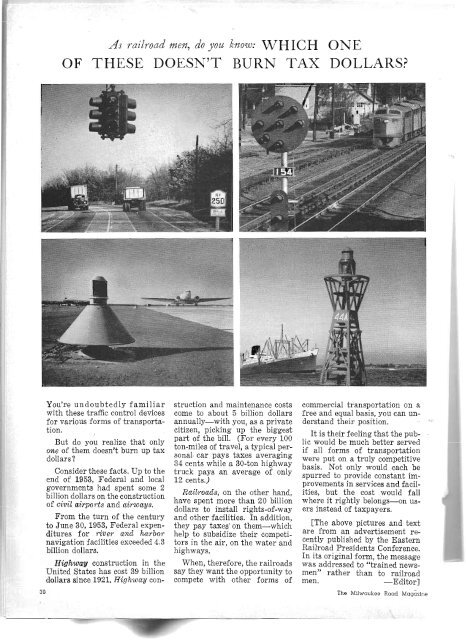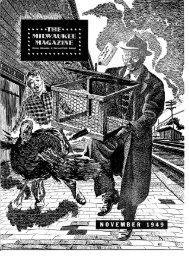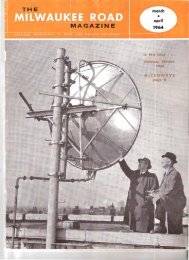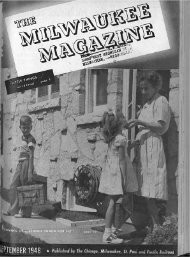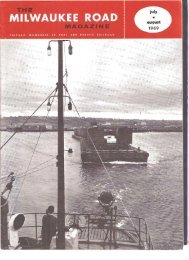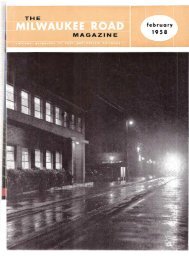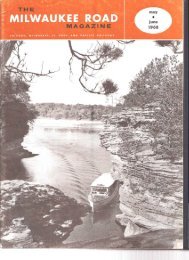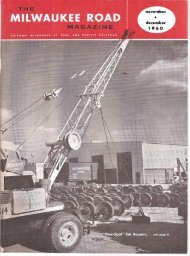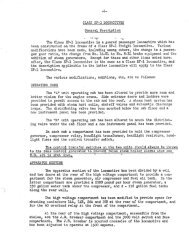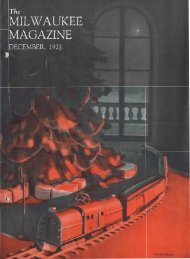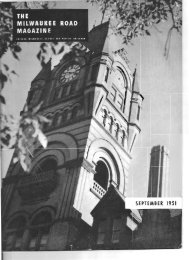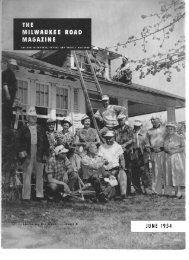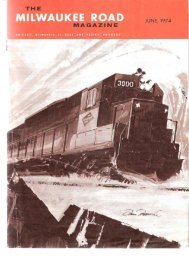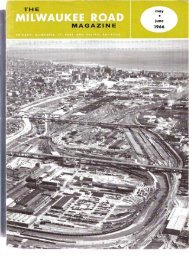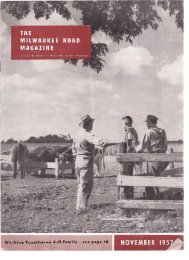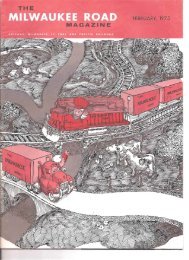April, 1954 - Milwaukee Road Archive
April, 1954 - Milwaukee Road Archive
April, 1954 - Milwaukee Road Archive
Create successful ePaper yourself
Turn your PDF publications into a flip-book with our unique Google optimized e-Paper software.
30<br />
As railroad men, do you know: WHICH ONE<br />
OF THESE DOESN'T BURN TAX DOLLARS?<br />
You're undoubtedly familiar<br />
with these traffic control devices<br />
for various forms of transportation.<br />
But do you realize that only<br />
one of them doesn't burn up tax<br />
dollars?<br />
Consider these facts. Up to the<br />
end of 1953, Federal and local<br />
governments had spent some 2<br />
billion dollars on the construction<br />
of civil airports and airways.<br />
From the turn of the century<br />
to June 30, 1953, Federal expenditures<br />
for river and harbor<br />
navigation facilities exceeded 4.3<br />
billion dollars.<br />
Highway construction in the<br />
United States has cost 39 billion<br />
dollars since 1921. Highway con<br />
struction and maintenance costs<br />
come· to about 5 billion dollars<br />
annually-with you, as a private<br />
citizen, picking up the biggest<br />
part of the bill. (For every 100<br />
ton-miles of travel, a typical personal,<br />
car pays taxes averaging<br />
34 cents while a 30-ton highway<br />
truck pays an average of only<br />
12 cents.)<br />
Railroads, on the other hand,<br />
have spent more than 20 billion<br />
dollars to install rights-of-way<br />
and other facilities. In addition,<br />
they pay taxe$' on them-which<br />
help to subsidize their competitors<br />
in the air, on the water and<br />
highways.<br />
When, therefore, the railroads<br />
say they want the opportunity to<br />
compete with other forms of<br />
commercial transportation on a<br />
free and equal basis, you can understand<br />
their position.<br />
It is their feeling that the public<br />
would be much better served<br />
if all forms of transportation<br />
were put on a truly competitive<br />
basis. Not only would each be<br />
spurred to provide constant improvements<br />
in services and facilities,<br />
but the cost would fall<br />
where it rightly belongs-on users<br />
instead of taxpayers.<br />
[The above pictures and text<br />
are from an advertisement recently<br />
published by the Eastern<br />
Railroad Presidents Conference.<br />
In its original form, the message<br />
was addressed to "trained newsmen"<br />
rather than to railroad<br />
men. -Editor]<br />
The <strong>Milwaukee</strong> <strong>Road</strong> Magazine<br />
'1


